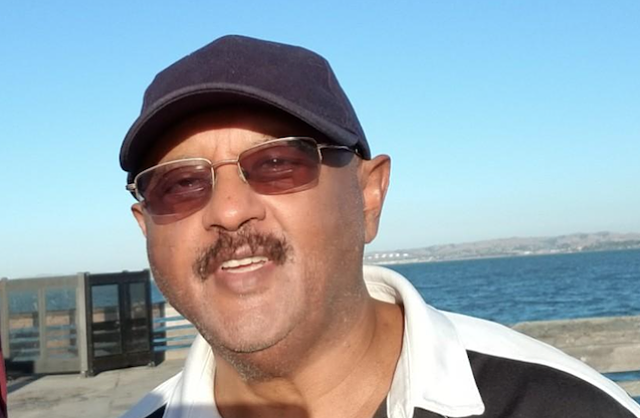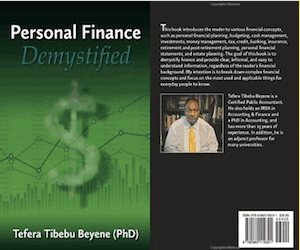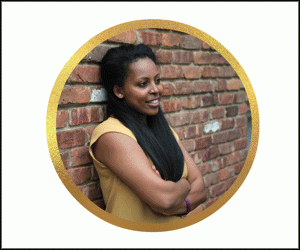 Ethiopian-American Engineer Fesseha Atlaw, founder of the first Ethiopic software company, Dashen Engineering, and an early pioneer of digitized Ethiopian script. (Courtesy photo)
Ethiopian-American Engineer Fesseha Atlaw, founder of the first Ethiopic software company, Dashen Engineering, and an early pioneer of digitized Ethiopian script. (Courtesy photo)
Tadias Magazine
By Tadias Staff
April 6th, 2018
How Ethiopic Script Was Introduced to Modern Computers: Interview with Fesseha Atlaw
New York (TADIAS) — Just a couple of decades ago it was unthinkable to see Amharic and other Ethiopian languages on our phones, computers, and other electronic devices. Today, however, Ethiopic script is ubiquitous and is used in many applications including in our communication via text messages and on social media.
We were curious to find out when and how Ethiopic Script was introduced to modern computers, so we reached out to Ethiopian-American Engineer Fesseha Atlaw, founder of the first Ethiopic software company, Dashen Engineering, and an early pioneer of digitized Ethiopian script.
Fesseha was among those profiled here some 25 years ago in an article titled “Legends of Ethiopic Computing” for his role as the producer of the first usable Ethiopic word processor. The article noted: “Ato Fesseha is best known in the field of Ethiopic computing for providing the genesis for the concept of computerizing the Ethiopian alphabet.”
“The Ethiopian script has come a long way since it was first applied to a computer program in the early 1980s,” Fesseha says. “We have made a lot of progress in the last three and a half decades, and I get emotional when I think of how far we have come in just 30 years.”
While working with the Unicode Technical Consortium in the early 90s (where he was the only African participant for 30 years) Fesseha was also responsible for proposing and pushing Ethiopic script to be the computer name instead of Geez or Amharic. “This I did consulting with Ethiopian linguists,” Fesseha explains. “The implication for this name selection was huge. It not only permanently codifies the computer reference to the language to be associated with Ethiopia but also correctly credits that the alphabet origination or development belongs to all Ethiopians.”
“Necessity is the mother of invention.”
For Fesseha it was his passion for writing in Amharic rather than his profession in the tech industry that initially inspired him to design the first known Ethiopic Script Software. “I loved writing in Amharic as far back as I remember,” recalls Fesseha in an interview with Tadias.
In fact he was barely 15 years old when a high school play that he wrote got the attention of the late Poet Laureate of Ethiopia Tsegaye Gabre-Medhin and was staged at the National Theater garnering him a “thumbs up” review in the Ethiopian Herald and a full page interview on Ethiopia Dimts (የኢትዮጵያ ድምፅ).
Years later, after Fesseha moved to the United States and became an engineer working for Hewlett-Packard (HP) in the heart of Silicon Valley, he still wanted to continue his writing and had contacted people in Ethiopia to send him an Amharic typewriter. But there was one huge problem.
“I discovered that it was a capital crime to smuggle an Amharic typewriter out of Ethiopia,” Fesseha says. “It was a political punishment to discourage free expression and dissemination of pamphlets and other material by opponents of the military government of Mengistu Hailemariam. As the saying goes ‘The pen is mightier than the sword’ so they did not want anybody to have this writing machine.” He adds: “I even contacted Olivetti in Italy that manufactured Amharic typewriters for the Ethiopian market. They told me that they had a contractual obligation with the Ethiopian government not to sell the typewriters outside of Ethiopia.”
“Necessity is the mother of invention” Fesseha says, explaining that he decided instead to develop a software using the Ethiopic alphabet. Of course there was no such thing as Windows Operating System at the time and personal computers were at very early development stages — home computers were not even in the radar — and buying one was an expensive endeavor. Fesseha rented the cheapest IBM computer (8086 Micro processor) and a “noisy” DOT Matrix printer for $380 per month.
“It was very crude process,” he recalls. “I had to design screen font and printer font separately for each letter pixel by pixel and grid by grid.”
Fesseha held his first major demonstration at Stanford University in the mid-1980s. “It was a well attended event,” Fesseha shares. “Many people came including the touring Ethiopian delegation to the U.S.” Shortly thereafter in 1986/87 Fesseha gave his first interview to Voice of America’s Amharic service.
The touring Ethiopian delegation eventually extended an invitation to him to do a similar demonstration in Ethiopia, which ended up with him hosting a workshop at the Hilton Hotel in Addis Ababa. “It was a dramatic day because Mengistu showed up unannounced,” Fesseha chuckles remembering the moment. “All of a sudden they cleared out the room and a whole bunch of military people with machine guns came in. I kind of sensed that it might be Mengistu and he was not my favorite guy. I had demonstrated against him, I used to write articles in U.S. newspapers about the atrocities and killings at that time, so I was a bit nervous to meet him face-to-face.”
Just as Fesseha guessed, after a few hours of waiting, Mengistu strolled right into the room with his entourage heading straight to the demo table to meet Fesseha. “So I quickly wrote on the screen his favorite slogan: “Hulum Neger Wede Tor Ginbar,” (“ሁሉም ነገር ወደ ጦር ግንባር”), Fesseha says. “To my relief Mengistu found it humorous and smiled from afar.” Although Mengistu was impressed and asked a lot of questions there “was not much productive follow-up afterwards,” Fesseha notes. He returned to California and continued on improving on it and making it available to the public “without any help from the Ethiopian government.”
Fesseha Atlaw hosting the first Ethiopic software workshop at the Hilton Hotel in Addis Ababa in the mid 1980s. (Courtesy photos)
What were the most significant milestones in digitizing Ethiopic Script?
“The most important development in the history of Ethiopic software came in the late 1980s and early 1990s when Voice of America (VOA) international service gave Xerox a contract to develop multilingual computers and one of the languages they requested was Amharic,” Fesseha says. “Collaborating with Joe Becker from Xerox I pushed for “Ethiopic” to be the unicode name in the Unicode list of languages,” Fesseha emphasizes. “I am proud of that struggle and I consider it to be my biggest contribution. Now the computer knows our alphabet as ‘Ethiopic’ and even a brand new computer will be able to display and allow you to write Ethiopic characters without having to download or install fonts or programs.”
What is Unicode?
“Unicode is an international encoding standard for use with different languages and scripts, by which each letter, digit, or symbol is assigned a unique numeric value that applies across different computer platforms and software programs. Ethiopic was included in the Unicode standard in 1990. I feel honored to have had a part in the inclusion of Ethiopic in the Unicode standard working with the founder of the Unicode Consortium himself, Dr. Joe Becker of Xerox Corporation. I have been working with Dr. Becker and others in proposing improvements and additions to the set of Ethiopic characters. Members come from high tech companies including IBM, Google, Apple, Facebook, Microsoft, and Amazon. While I was at Hewlett Packard and Dashen Engineering I participated representing the two companies, now I am an individual member since I no longer work at HP. I am still the only member from Africa.”
What is the state of Ethiopic in 2018?
“The state of Ethiopic is thriving as never before,” says Fisseha enthusiastically. “Now almost all, I would say 90%, of software applications can easily be done in Ethiopic.” Some of these include Amharic Translation such as in Google browser, as well as Amharic OCR and Amharic Natural Language Processing.
“Regarding the Amharic OCR (Optical Character Recognition), it’s a relatively new technology even for English language users,” Fesseha explains. “The way it works is, the computer takes a picture of a character and matches it with a UNICODE equivalent. The implication is huge. We can now search for a sentence or a word in old scanned books or Amharic documents that were written long time ago before the advent of Ethiopic Software. It also means you can now edit old books and scans as the OCR engine converts any written Ethiopic into editable format after it has been scanned as PDF.”
As for Amharic Natural Language Processing, “this is where a computer can actually read a book for you (in a synthesized voice) and one can also give instructions to the computer via natural spoken language,” Fesseha adds. “Again the implication is immense. You can speak to the computer or mobile device in Amharic and it will start writing your words. You can do this within an application or cut and paste the written words into any application like Facebook or Twitter or Excel etc. This natural Language processing AI is also allowing us to have our own robot that takes instructions and provides an answer in Amharic (Much the same way as Alexa of Amazon and Siri of Apple). One young developer has called his robot “Meron.” An actual sample conversation looks like this:
ጤና ይስጥልኝ
ጤና ይስጥልኝ ስሞትን ማን ልበል?
ፍሥሓ እባላለሁ
ሰላም ፍሥሓ እባላለሁ ፣ ሜሮን እባላለሁ
አማርኛ ትችያለሽ ?
አዎ
ጎበዝ
Fesseha points out that modern graphics design and animation can likewise easily be done in Amharic and cites examples such as TV program graphics, neon signs and animated words and phrases.
“The sky is the limit,” Fisseha enthuses. “The basis for all this was the foundation that was set some 30 years ago to include Ethiopic in the globalized world language ranks.” Now many young Ethiopians such as MetaAppz, Ethiocloud, Agerigna and many many more have taken it to the next level and are developing applications at a very fast rate.”
There have been some recent discussions and debates about whether or not Ethiopic should be used to write Afaan Oromo, and Fesseha who also advises the Oromo community in helping to standardize Qube writing system, adds that he does not believe in imposing Ethiopic on anyone.
“That’s a political issue that Oromos must decide on their own as to the value of using Ethiopic script for Afan Oromo” he says. “As you know Oromiffa has several dialects so Qube is not standardized yet and there are some related technical issues that we are working to resolve at the moment.”
“Some 40 years ago, Oromo intellectuals felt that Ethiopic/Geez script was too cumbersome to computerize and developed the Qube system,” shares Fesseha. “Now in 2018, Ethiopic can do everything a Latin script can do and in my humble opinion, if Afaan Oromo started using Ethiopic, it would be easier to have Google translate and other technological advances include Afaan Oromo and the rich Oromo language can benefit from the technology sooner than later. I will continue to do my best to help in this regard. I call on Oromo scholars to consider using Ethiopic to write Afaan Oromo not for political reason but for simple technical reasons. Ethiopic script belongs to all Ethiopians like Adwa belongs to all of us.”
Cover of an old Afaan Oromo Bible መጫፈ ቁልቁሉ reprinted from the 1800′s version.
Ethiopic Unicode has had characters that represent unique Afaan Oromo sounds such as “በዻኔ” “ዻባ” “ዼሬሳ” … These are not new developments but have been incorporated in the Unicode some 30 years ago as shown in this chart.
Fesseha emphasizes that the development of Ethiopic Script incorporated the participation of many individuals over the years in helping to fine-tune the process. He notes: “From the beginning it was a community-based effort and the credit goes to lots of people and especially the young engineers who are continuously refining the use of Ethiopic in various technology platforms.”
—
You can learn more about the history of Ethiopic Software and contact Fesseha Atlaw at fesseha@optmax.com or through www.ethiopicsoftware.org.
Join the conversation on Twitter and Facebook.

























